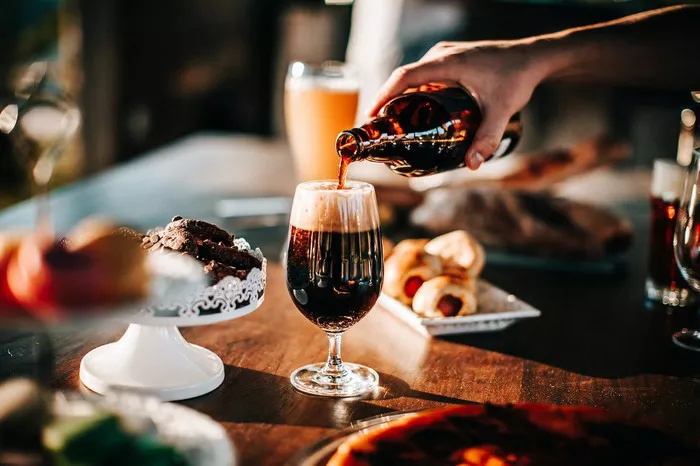Wine, a cherished beverage with a rich history, has evolved over centuries, continually adapting to changing consumer preferences and market demands. One significant shift in recent years has been the rise of low alcohol wines, catering to health-conscious consumers seeking lighter options without compromising on flavor or quality. But how exactly is low alcohol wine made? Let’s delve into the intricate process behind crafting these delightful libations.
Understanding Low Alcohol Wine
Before diving into the production process, it’s essential to grasp what constitutes low alcohol wine. Traditionally, wine undergoes fermentation until most of the sugars in the grape juice are converted into alcohol, resulting in a beverage with alcohol content typically ranging from 12% to 15% or higher. However, low alcohol wine contains significantly less alcohol, usually hovering around 5.5% to 11%.
Selecting the Grapes
The journey to crafting low alcohol wine begins in the vineyard. Grape selection plays a pivotal role in determining the final alcohol content of the wine. Winemakers often opt for grapes with lower sugar levels, as these will result in less alcohol during fermentation. Varieties such as Riesling, Pinot Grigio, and Grenache are popular choices due to their naturally lower sugar content.
Harvesting at the Right Time
Timing is crucial when harvesting grapes for low alcohol wine. Winemakers aim to pick the grapes at the optimal moment to ensure the sugar levels are at their lowest while still maintaining desirable flavors and acidity. Harvesting too early may result in underripe grapes, leading to unbalanced flavors, while waiting too long risks higher sugar levels and increased alcohol content.
Gentle Grape Processing
Once harvested, the grapes undergo processing to extract the juice for fermentation. In crafting low alcohol wine, gentle handling of the grapes is paramount to preserve delicate flavors and aromas while minimizing sugar extraction. Techniques such as whole-cluster pressing and minimal maceration help achieve this goal, allowing for precise control over the sugar content in the juice.
Fermentation Management
Fermentation is the heart of winemaking, where grape juice transforms into wine with the help of yeast. To produce low alcohol wine, winemakers employ various techniques to control fermentation and limit alcohol formation. One approach involves using specialized yeast strains engineered to consume less sugar, resulting in lower alcohol levels. Additionally, fermenting at cooler temperatures slows down the process, giving the yeast less time to convert sugars into alcohol.
Partial Fermentation
Another method used in crafting low alcohol wine is partial fermentation. In this technique, fermentation is intentionally halted before all the sugars are converted into alcohol. This can be achieved by chilling the wine to temperatures where the yeast becomes dormant or by adding sulfur dioxide to inhibit fermentation. The result is a sweeter wine with lower alcohol content, known as “off-dry” or “semi-sweet.”
See Also: 5 Benefits of Drinking Wine Before Bed
Blending for Balance
Blending is a common practice in winemaking to achieve the desired flavor profile and balance. In the case of low alcohol wine, blending can be used to adjust the alcohol content by mixing wines of different alcoholic strengths. For example, a high alcohol wine can be blended with a low alcohol wine to bring down the overall alcohol percentage while maintaining complexity and character.
Reverse Osmosis
A more advanced technique employed in crafting low alcohol wine is reverse osmosis. This process involves passing the wine through a semi-permeable membrane under pressure, separating alcohol molecules from water and other compounds. By selectively removing alcohol, winemakers can precisely control the final alcohol content of the wine without compromising on flavor or quality.
Spinning Cone Column
The spinning cone column is another innovative technology used to produce low alcohol wine. This apparatus utilizes centrifugal force to vaporize and remove alcohol from the wine at low temperatures, preserving delicate flavors and aromas. The result is a wine with reduced alcohol content and enhanced freshness, making it a popular choice among winemakers seeking alternative methods of alcohol reduction.
Natural Techniques
In addition to technological advancements, some winemakers embrace natural techniques to create low alcohol wine. These may include harvesting grapes earlier to capture lower sugar levels, fermenting with wild yeast strains that are less efficient at converting sugars into alcohol, or utilizing techniques such as carbonic maceration to extract fewer sugars from the grapes.
Quality Control and Tasting
Throughout the production process, rigorous quality control measures are implemented to ensure that the wine meets the desired standards. Winemakers conduct regular tastings and chemical analyses to monitor fermentation progress, adjust techniques as needed, and maintain the integrity of the final product. This attention to detail ensures that low alcohol wines deliver on both taste and quality.
Conclusion
In conclusion, the production of low alcohol wine is a multifaceted process that requires careful consideration of grape selection, fermentation techniques, and technological innovation. By employing a combination of traditional methods and modern advancements, winemakers can craft wines with reduced alcohol content without compromising on flavor, complexity, or quality. As consumer preferences continue to evolve, the demand for low alcohol wine is expected to rise, driving further innovation and creativity in the world of winemaking.


